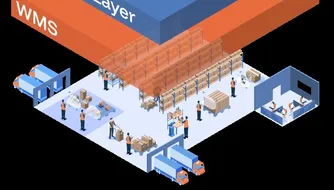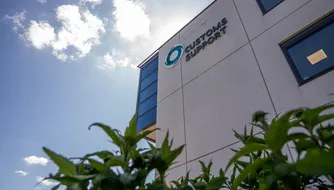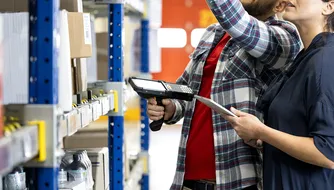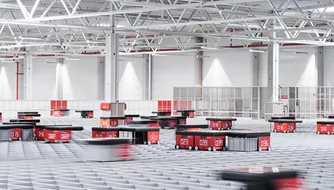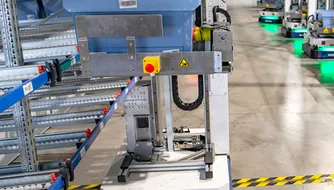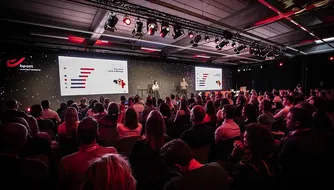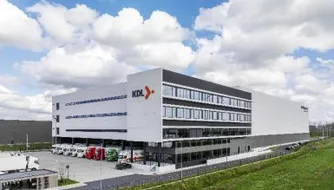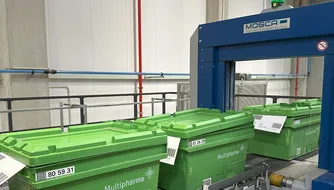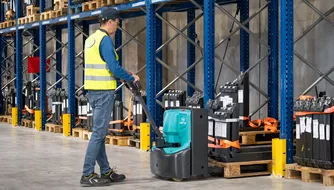Understanding Digital Twins and their Implementation in Businesses

(Advertorial)Digital twins are virtual representations of physical objects, processes, systems or environments that mirror their real-world counterparts in appearance and behaviour. By allowing organisations to run simulations in a virtual rather than physical setup, these digital replicas enable businesses to monitor, analyse and optimise their operations. This will increase efficiency, reduce costs and improve decision-making. Let's delve deeper into digital twins and explore how businesses can implement this technology.
- Data Collection and Integration: The first step in creating a digital twin is to gather data from the physical asset. This data can be derived from sensors, IoT devices and other monitoring systems.
- Model Development: The data is then integrated into a digital model, which can be updated in real time to provide an accurate representation of the physical asset, incorporating its dimensions, materials and other properties. This model can then serves as the basis for the digital twin and should accurately represent the asset's behaviour under real-world conditions.
- Simulation and Analysis: With a digital twin in place, businesses can run simulations and analyse the outcomes of various scenarios, such as adjusting machine settings, altering production schedules or testing the impact of environmental changes. These simulations can help identify optimal conditions for maximum efficiency and minimal waste.
- Optimisation and Predictive Maintenance: Insights gained from the digital twin can help optimise production processes, streamline workflows and predict maintenance requirements. By identifying potential issues before they become critical, businesses can reduce downtime and extend the life of their assets.
- Continuous Improvement: By collecting additional data and integrating it into the digital twin, the model can be refined and updated, allowing for continuous improvement in operations and decision making. Such structural data collection is, of course, a further milestone in enabling AI and advanced analytic possibilities.
In addition to the above, by using digital twin technology, manufacturers can provide maintenance technicians with augmented reality (AR) programmes. Using AR glasses, technicians can view the most up-to-date to overlay models of the machine on the one in front of them. This ensures they always have the right specs, as and when they need them. This improves efficiency when repairing equipment, reduces the learning time required for new employees and captures operational data for operation optimisation. Overall, this enables improved predictive maintenance.
Implementing Digital Twins in Businesses
The implementation of digital twins should be well-thought through in order to maximise the overall business value. The key steps to work through typically include:
- Defining Objectives and Scope: Start by identifying your desired goals for your digital twin, such as improving product quality, optimising processes and/or reducing operational costs. Determine the scope of the digital twin, including those assets, processes, or systems that are to be included.
- Establishing a Cross-functional Team: Assemble a team with representatives from various departments, including IT, operations, engineering and management. This will ensure a comprehensive understanding of the project's requirements and objectives.
- Assessing Technology Requirements: Evaluate your existing digital infrastructure and identify the hardware, software, and connectivity required for implementing a digital twin. This may include IoT devices, sensors, cloud computing services and data analytics tools.
- Developing and Integrating the Digital Twin: Work with your team, and where necessary, external partners, to develop the digital twin model and verify its accuracy and real-time capabilities. Integrate the digital twin with your existing systems, such as enterprise resource planning (ERP) or manufacturing execution systems (MES).
- Monitoring and Refining: Continuously monitor the digital twin's performance and refine the model based on new data and insights. Implement the changes identified through simulations and analyses in order to optimise your operations and achieve your objectives.
- Scaling and Expanding: Once the initial digital twin implementation has proved successful, consider expanding its scope to include additional assets, processes, or systems, thus further enhancing your organisation's efficiency and decision-making capabilities.
In conclusion, digital twins offer businesses a powerful tool for optimising their operations, reducing their costs and improving their decision-making. By understanding the key components of digital twins and following a structured approach to implementation, organisations can harness the use of this technology to achieve a competitive advantage in today's rapidly evolving business landscape.
Generating Additional Value through Tax
As well as improving efficiency and decision making, implementing digital twins in businesses can also bring tax implications and opportunities. Some of the core areas to consider in this space typically include incentives and transfer pricing.
Incentives
Governments and regional authorities often offer tax incentives and grants to encourage businesses to adopt innovative technologies, including digital twins. These can help offset the costs of implementation and support ongoing research and development efforts.
- Research and Development (R&D) Incentives: Many countries provide tax credits, deductions or exemptions for R&D expenses relating to the development and implementation of digital twins. These can significantly reduce the financial burden of adopting this technology.
- Sustainability and Digitalisation Incentives: Digital twins can contribute to sustainable practices and digital transformation, which may qualify your business for additional tax incentives or grants that are focused on promoting these objectives.
- Cross-border and Regional Grants: Some grant programmes, particularly those funded by the European Union or other international organisations, may require collaboration between businesses in different countries. Such grants can provide valuable resources for implementing digital twin technology.
Transfer Pricing
Digital twin technology can impact the value chain and intangible assets within an organisation, potentially affecting transfer pricing policies.
As digital twins can contribute to the creation and enhancement of intangible assets, such as software or proprietary processes, it is essential to consider the appropriate allocation of profits between related entities in different jurisdictions. When it comes to digital twins, the setup may require licensing or cost-sharing arrangements to be put in place.
The profit allocation to the digital twin intangible assets will typically be a key driver for the overall tax incentives the organisation may be able to claim. Patent boxes, for example, may offer a beneficial tax regime to the value/profit which can be tied to the innovative asset.
In conclusion, taking into account tax in areas such as incentives and transfer pricing is crucial when implementing digital twins in your organisation. By fully understanding and addressing these tax implications, you can ensure that your business captures the full value of digital twin technology both operationally and tax-wise.
More information: Understanding Digital Twins and their implementation in manufacturing (pwc.be)

